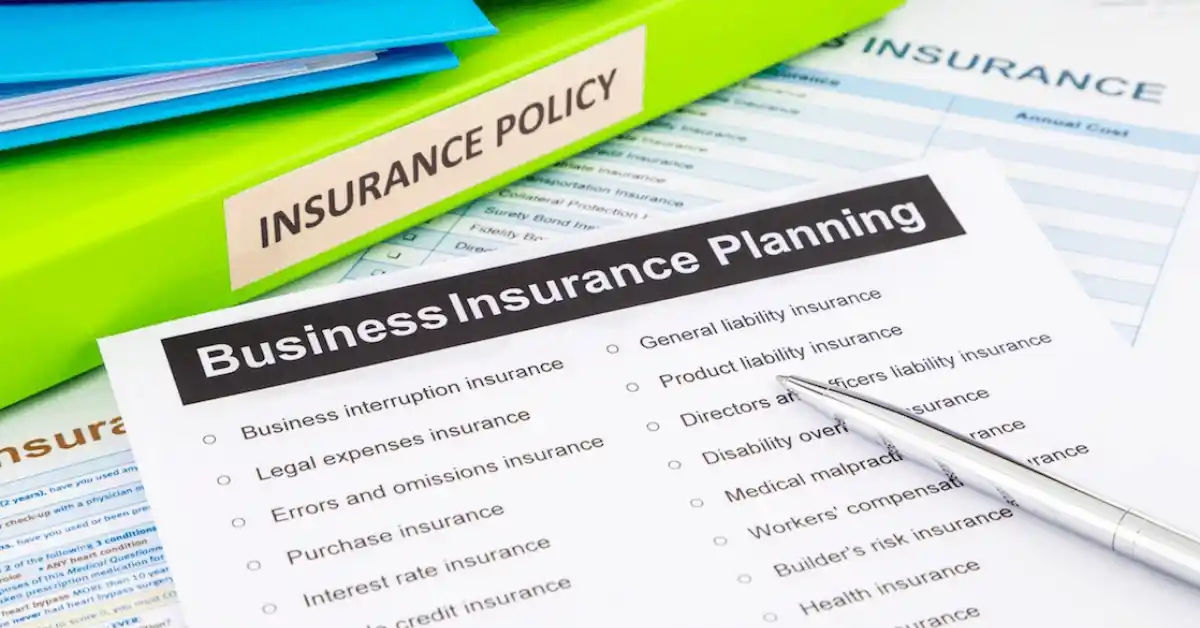What Is Business Insurance?
Business insurance in 2025 is a protection plan that shields companies from financial losses caused by accidents, lawsuits, property damage, cyberattacks, or employee injuries. In exchange for premiums, insurers cover risks that could otherwise bankrupt a small or mid-sized business.
Whether you operate a coffee shop, a construction firm, or an online consultancy, the right policy ensures continuity when the unexpected happens.
Why Small Businesses Need Coverage in 2025
Running a business today means facing more risks than ever:
- Lawsuits: Even minor accidents can lead to costly claims.
- Cybercrime: Small businesses are the #1 target of ransomware in 2025.
- Extreme weather: Floods, fires, and storms cause billions in annual damages.
- Workplace safety: OSHA reports nearly 2.8 million workplace injuries occur each year.
A study by the U.S. Chamber of Commerce revealed that 40% of small businesses don’t reopen after a disaster if uninsured. That makes business insurance not optional, but essential for survival.
Types of Business Insurance
General Liability Insurance
Protects against third-party injuries, property damage, or advertising mistakes.
- Example: A customer slips on your floor, sues, and medical bills are covered.
- Average Cost: $600–$1,200/year for small businesses.
Workers’ Compensation
Mandatory in most states if you have employees. Covers medical bills and lost wages for workplace injuries.
- Example: A delivery driver injures their back lifting boxes, insurance pays wages and rehab.
- Average Cost: $1,000–$3,000/employee annually, depending on industry risk.
Commercial Property Insurance
Protects buildings, inventory, and equipment from fire, theft, or natural disasters.
- Example: A fire damages a bakery’s ovens; insurance pays replacement costs.
- Average Cost: $800–$2,500/year, influenced by property value and location.
Cyber Liability Insurance
A fast-growing need in 2025, covering data breaches and ransomware.
- Example: Hackers steal customer credit card info; policy pays for recovery and legal fees.
- Average Cost: $1,200–$7,500/year, depending on business size.
Business Interruption Insurance
Covers lost income if your business must shut down temporarily.
- Example: Flooding forces a retail store to close for two months; insurance covers lost revenue.
Professional Liability (Errors & Omissions)
Essential for consultants, lawyers, or financial advisors. Covers negligence claims or failure to deliver promised services.
Business Owner’s Policy (BOP)
A bundled package combining general liability and property insurance. Popular among small businesses because it reduces costs.
Cost of Business Insurance in 2025
The price of coverage depends on industry, size, location, and claims history.
| Coverage Type | Average Annual Cost 2025 | Risk Factors |
| General Liability | $600 – $1,200 | Location, foot traffic, claims |
| Workers’ Comp | $1,000 – $3,000/employee | Job risk, payroll size |
| Commercial Property | $800 – $2,500 | Building value, fire/flood zones |
| Cyber Liability | $1,200 – $7,500 | Data stored, security protocols |
| Business Owner’s Policy | $1,200 – $3,000 | Industry, revenue, location |
| Professional Liability | $1,000 – $5,000 | Type of services, claims history |
💡 Example: A 10-person marketing agency in Chicago might spend $7,500 annually for a mix of liability, property, and cyber coverage.
Top Business Insurance Providers 2025
Hiscox
Best for freelancers and startups. Offers flexible policies for small businesses with online-first convenience.
The Hartford
Specializes in mid-sized businesses with tailored coverage. Strong claims service and bundled discounts.
Travelers
Excellent for property-heavy businesses like manufacturers or contractors. Offers risk management support.
Chubb
Premium provider for high-value businesses. Strong in global coverage and cyber liability.
Next Insurance
A modern digital-first insurer. Known for affordable policies for contractors, consultants, and gig workers.
How to Choose the Right Plan
1. Assess Your Risks
Every industry faces unique exposures. A bakery may need property and liability coverage, while an IT firm must prioritize cyber protection.
2. Compare Policies
Always request at least three quotes with identical coverage to evaluate true costs.
3. Check Provider Ratings
Look for insurers with AM Best ratings of “A-” or higher for financial stability.
4. Bundle Policies
Consider a Business Owner’s Policy (BOP) to reduce costs by 10–20%.
5. Understand Exclusions
Read fine print carefully. For instance, property policies may exclude flood damage unless purchased separately.
6. Reevaluate Annually
As your business grows, update coverage to match revenue, staff count, and assets.
Real-World Example: Restaurant Coverage 2025
A small restaurant in New York typically carries:
- General Liability: $1,100/year
- Property Insurance: $2,000/year
- Workers’ Comp: $3,500/year (with 5 employees)
- Cyber Insurance: $1,800/year
➡️ Total: Around $8,400 annually, which is far less than the potential costs of lawsuits or closures.
Ways to Save on Business Insurance
- Bundle multiple policies with the same provider.
- Improve safety protocols to lower workers’ comp rates.
- Adopt cybersecurity tools for discounts on cyber liability.
- Raise deductibles carefully to reduce premiums.
- Join trade associations many offer group rates.
- Re-shop every renewal to compare updated quotes.
Conclusion
Business insurance in 2025 isn’t just protection; it’s peace of mind that keeps your company running when unexpected challenges strike. With rising cyber risks, higher climate-related damages, and an increasingly litigious environment, the right mix of liability, property, and specialty coverage ensures your business stays strong. By comparing providers, tailoring policies, and using cost-saving strategies, small business owners can secure the protection they need without overspending.








